Málaga
Málaga is a key beach town and name of a province situated near the mountains offering warm breezes, blue waters and cool attractions.
Málaga was founded by Phoenicians before the roman era. It has become the second largest port in Spain and a great holiday destination due to its 324 days of sunshine a year.
Málaga city is the capital of the homonymous province. There are about 1.5 million inhabitants and a quarter of those people live in it's capital. This beautiful city is backed by mountains keeping the cooling northern breezes out while Mediterranean sea keeps its temperature moderate year round. This micro climate has made Málaga a major beach destination for Spaniards, and all its northern neighbors. Its main attractions are conveniently located in the center of the city surround by the cathedral. Even though Málaga is Andalusia's second largest city, it lacks the stress and sense of detachment you notice in other big cities. Málaga has preserved it's warmth and charms among it's people and offers them for everyone to discover !
Because of it's location along the coast, most people book a flight to Málaga's international airport and go to beach towns around Malaga. The airport is large but convenient and offers good transportation options.
Malaga is sophisticated but has an Andalucian feel. It has a lot to offer including museums and tapas bars. These tapas bars are visited mostly by locals so they can give you a genuine impression of how the Spanish natives of Málaga like to enjoy life.

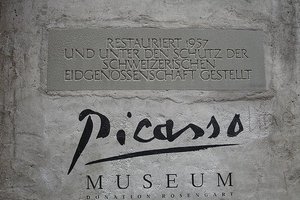
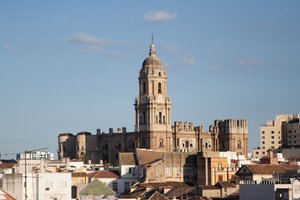
The Alcazaba | Picasso museum of Málaga | Cathedral |
This is a fortified palace that dates from the Muslim era. It's located in the foothills of Mount Gibralfaro. The Alcazaba and the Gibralfaro Castle are linked by a rocky corridor called The Corach. The Alcazaba is also next to the Roman Theatre, the city park and opposite the port, which gives it a unique and privileged enclave. Open in Summer every day from 9h30 to 20h, and in the Winter, from 8h30 to 19h. Admission fees and opening times depend on time of the year and other variables. | The Picasso Museum is housed in the Buenavista Palace, a Renaissance building from the 16th century and the most important example of noble architecture from the period. Tirelessly prolific, Picasso painted over 2,000 works. More than 200 works including paintings, drawings, sculptures, ceramics, and engravings testify to the magnitude of his iconic career, from its inception until the last academic paintings of the 1970's. Admission fees and opening times depend on time of the year and other variables. | The Cathedral of Malaga is called the Cathedral of the Incarnation (Catedral de la Encarnación) and is located where the Mosque-Aljama stood during the city's the eight centuries of Muslim rule. Inside there is a vast body of sculptural work, including 42 carvings by Pedro de Mena, Vargas, and Giuseppe Ortiz Micael Alfaro. There is also a superb organ, with more than 4,000 pipes, that is still used today. It also houses the Cathedral Museum. Admission fees and opening times depend on time of the year and other variables. |
Marbella
Marbella is, without a doubt, one of the Costa del Sol's major tourist centres, thanks to the high quality of the facilities and services it provides. Puerto Banús, one of the main focal points for tourists in the town, houses an exclusive leisure area inside the excellent facilities of its marina. But Marbella is also a paradise for golf lovers. A dozen magnificent courses allow the golfer to play the sport before the unusual backdrop provided by the sea and the mountains. The historic part of town, sitting on a beautiful bay, shelters lovely corners of a typically Andalusian flavour, with whitewashed houses and orange trees adorning the streets and squares. An ideal setting for sampling any one of the tasty recipes of the local cuisine.
Marbella is deservedly one of the Costa del Sol's prime destinations. Its excellent climate, beaches, natural surroundings and its major sports complexes are just some of the countless attractions which this town on the Málaga coast offers. Clear proof of the high quality of its infrastructure is Puerto Banús, one of the most emblematic spots in Marbella. Surrounded by exclusive housing developments, this famous marina each year welcomes some of the biggest and most luxurious yachts in the world. Its facilities also offer a select leisure area made up of restaurants, business premises and shops selling the big international designer labels and luxury items.
From Cabopino to Guadalmina, Marbella offers the visitor 26 kilometres of beautiful coastline with a succession of sun-drenched beaches equipped with all kinds of services, which include modern hotels, residential complexes, shops and restaurants. The beaches of San Pedro de Alcántara, a major population centre less than ten kilometres from Marbella, are a fine example of the balance struck between nature and tourist development.
Sports lovers will be in paradise in Marbella. A dozen magnificent golf courses allow the sport to be played at the highest level year-round, in surroundings of striking natural beauty.
Those who prefer water sports will find the town has three marinas where they can take up the activity they prefer.
In addition, Marbella has several riding schools, tennis clubs and other facilities to suit the most varied tastes. All this, and not forgetting the enormous possibilities the Sierra Blanca hills offer for all kinds of outdoor pursuits.
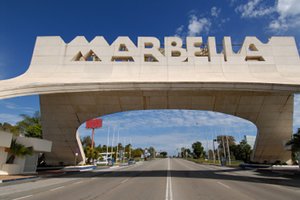
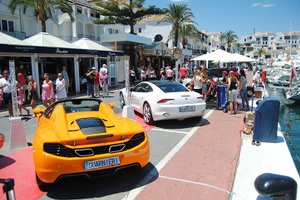


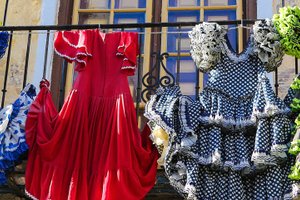
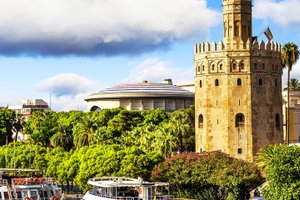
Seville
Travel Through the Most Romantic and Magical City in Spain
Sevilla spews charm.
This town is what you think of when visualising Spain. Bullfights, Flamenco, bitter oranges, all things you will find in Sevilla.
Unfortunately, It is thought to be by most people as a side trip from Madrid and truthfully this city deserves more than 2 days and one night.
All the things it has to offer can't be listed and need to be experienced first hand!
Seville is such a great town because it is large enough to have a city feel but small enough not to feel overwhelmed. Sevilla has the second largest cathedral in the world, an alcazar instead of a palace, and of course a fantastic bullring.
As the gateway to the New World, Seville boomed when Spain did in the 16th century. Amerigo Vespucci and Ferdinand Magellan sailed from its river harbor to discover gold, silver, cocoa and tobacco. Sevilla was Spain's largest and richest city in the 17th century but their golden age ended when the Spanish empire crumbled.
They hosted the 1929 World Fair to help promote tourism. Unfortunately, It crashed along with the stock market. In 1992, Seville held another World Fair. This time, it was successful and left them with a great infrastructure. An airport, the Ave train, new bridges, and a new train station. In 2007 main boulevards around the cathedral were made pedestrian, which makes it even nicer.
Today It's Spain's fourth largest city, with about 700,000 people. It's Andalucia's star city and most popular destination. It has a special ambience, charm, and history. You definitely feel like you are stepping back in time, yet has all the modern desires you would find in a newer city. If there was ever a city to stay a while in and relax, this would be it. It's special, magical, and becomes a favorite for many....and once you get here, you'll know why. No words needed.
The Alcázar | The Museo del Baile Flamenco | Torre del oro |
Located between the Jardines de Murillo and the Cathedral, the Alcazar or Royal Palace in Seville is still a vacation spot for the King and Queen. Construction first began under Abd Al Ramán III in the early 10th century it is one of the best examples of mudéjar architecture in all of Spain. Later additions included those by Pedro the Cruel with the aid of Moorish craftsmen. The grounds and gardens around the building are an important part of the visit. If you're not able to make it to Granada to see the Alhambra make sure you stop here. Address: Patio de Banderas s/n Admission fees and opening times depend on time of the year and other variables. | The Museum of Flamenco Dance, the only one of its kind in the world, takes you on a journey to the heart of the Andalusian people, their identity and their spirit. This interactive museum is where the deepest roots of flamenco and the latest multimedia technology come together. The museum is an obligatory visit for anyone who wishes to gain an insight into the culture of Andalusia. Address: Calle Manuel Rojas Marcos, 3 Admission fees and opening times depend on time of the year and other variables. | Located on the Guadalquivir River and dating back to the 13th century (Almohade period), the top of the Torre del Oro was once covered in gold tiles which reflected in the sunlight, making the tower a visible fixture in Seville. During the Arab occupation it served as main point of defense and control of the river. The tower was connected to the city walls, and a large linked chain ran from the building to the other side of the river to control maritime traffic into the city. The Torre del Oro now houses the local maritime museum. Address: Calle Temprado, 3 (Arenal) Admission fees and opening times depend on time of the year and other variables. |
Granada
Granada was first settled in the prehistoric period by native tribes and was known as Ilbyr.
When colonising southern Spain, the Romans built their own city here calling it Illibris. Later, the Arabs invaded the peninsula during the 8th century and gave the city its current name Granada. It was the last Muslim city to fall to the Christians in 1492 at the hands of Queen Isabel of Castile and her husband Ferdinand of Aragon.
Alhambra GranadaThe long term capital of Moorish Andalucía, Granada is one of the pearls of Spain and is one of the most visited by tourists from all over the world. Not least for its many buildings and monuments built during this time period, with the world-famous “Alhambra” at the top of the list.
Generalife gardens Alhambra Granada was first put on the tourist map by Washington Irving´s romantic Tales of the Alhambra (1832), and the magical hilltop palace is now Spain´s most-visited monument attracting over two million visitors a year. It is hard to resist this nostalgic testament to the twilight years of the Moors reign in Spain, with its seductive patios, exquisite stucco work and wistful Generalife gardens. But there is a lot more to this busy University City than the Alhambra, so don´t miss out on exploring it´s atmospheric streets and enjoying its lively nightlife and first-rate tapas.
Albaicin Granada.Shaped by the hills, the historic quarters Albaicín and Alhambra founded on its slopes are brimming with steep, narrow streets, beautiful nooks and crannies and breathtaking landscapes and views. The new part of the city is situated on the plain, crisscrossed by the Gran Vía de Colón and Calle de los Reyes Católicos and where you can find the Cathedral surrounded by a bustling network of narrow streets.
Sacromonte Caves Granada SpainWalk through picturesque gardens, charming narrow streets, relax in one of those typical bars to have some of that famous “Trevélez” ham and local wine, and breathe in the centuries of history that surround you in every corner of this beautiful city. Enjoy listening to gypsies singing “Flamenco” and be sure to visit their famous “Cuevas” in Sacromonte where many still live and are renowned as magnificent artisans. If you visit during the right time of the year, you´ll be able to enjoy Granada´s popular and attractive festivals, based on both Moorish and Christian tradition.
Granada city is located at the foot of the “Sierra Nevada”, Spain´s highest mountain range and Europe´s most southern ski resort. Mulhacén its highest peak reaches an altitude of 3478 metres. The Mediterranean Sea is not far away, making it possible to ski and go to the beach in one day. With both these features at its finger tips, Granada is a great place to visit in any season.
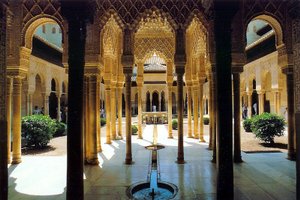
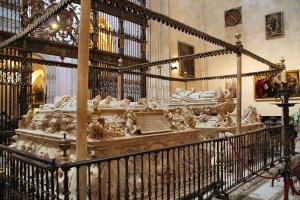
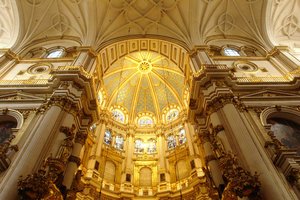
Alhambra | Royal Chapel | Cathedral |
The Alhambra was a palace, a citadel, fortress, and the home of the Nasrid sultans, high government officials, servants of the court and elite soldiers (from the 13th to the 14th century). Today, the monument is divided into four main areas: the Palaces, the military zone or Alcazaba, the city or Medina and the agricultural estate of the Generalife. All of these areas are surrounded by woods, gardens and orchards. Other notable buildings belonging to a different time period are also included, such as the Renaissance style Palace of Charles V, which houses the Alhambra Museum (most of the items are from the site of the monument) and the Fine Art Museum. Though the origins of both important monuments of Granada, the Alhambra and Generalife, are not clear, there are certain remains from the 9th century, the Alhambra’s most brilliant creations date from the Nasrid Empire and the reign of Carlos V, between the 13th and 16th centuries. In its palaces, from the window of the mirador de Daraxa to the mottled stone columns of the Carlos V palace, everything in this complex is designed, planned and executed with only the thought of perfection in mind. This perfection may approach that of the Koran or Sunna or find itself closer to the Neo-Platonism of the Renaissance. Address: Calle Real s/n. Admission fees and opening times depend on time of the year and other variables. | The royal chapel is situated on the northern front of the Cathedral and was built in the same period.
Designs for the Royal Chapel began in 1504 and it was built between 1505 and 1521 by Enrique Egas. It was commissioned by the Catholic Monarchs for their burial site. As both Queen Isabel and King Fernando died before the Royal Chapel was finished, they were first buried in the Friary of San Francisco in the Alhambra. They were then later moved to the Chapel once it had been completed, and buried alongside King Felipe and Queen Juana (known more commonly as Juana la Loca - Juana the Mad). Although their original idea was for all future Spanish Kings and Queens to be buried here, this did not happen as the monastery in El Escorial was used instead. The tombs were carved out of marble by the Tuscan sculptor Domenico Fancelli Address: Oficios 3. Admission fees and opening times depend on time of the year and other variables. | The construction of the cathedral of Granada was ordered by the catholic kings in 1503 shortly after conquering the town from the Moors. The cathedral was designed by the architect San Juan Evangelista in creating a design using Gothic and Renaissance styles. The catholic kings were later in 1521 buried in the royal chapel in the Cathedral.
This cathedral with its five naves is considered to be the most important Renaissance building of Spain. Built in the transition period of Gothic to Renaissance, it shows as well elements of this earlier style. Especially remarkable are the main chapel, Capilla Mayor, the lateral chapels and of course the façade with its sculptures. Capilla Real The Royal Chapel was built between 1505 and 1521 under Spain's catholic kings. The northern front was later on integrated in the cathedral. Address: Gran Vía 5. Admission fees and opening times depend on time of the year and other variables. |
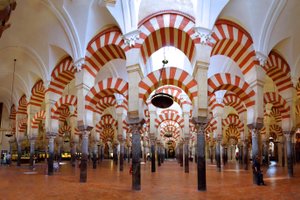
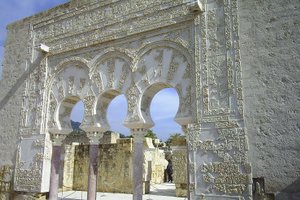
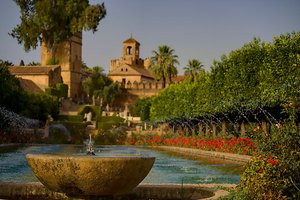
Cordoba
Situated along the Guadalquivir, Cordoba Spain's attractions are the Mezquita mosque and beautiful patios
Cordoba is a cute little town known mostly for its mosque, turned catholic cathedral, the Mezquita. Aside from Granadas Alhambra, The Mezquita is Europe's next best Islamic sight, a grand and amazingly well preserved mosque dating back to A.D. 784. And it’s a great representation of southern Spain's past of Islam and Catholicism.
Cordoba Spain has a grand Moorish and Roman past, and served as a regional capital for both empires. The Mezquita takes you back to the time where it was a thriving and sophisticated culture. It was a place where enlightened thought, artistic expression, philosophy, and science flourished when the rest of Europe was in the Dark Ages.
Mezquita Mosque, Cordoba
The Juderia, the quarter with Jewish neighborhoods and flowery patios are another special thing about Cordoba. Both the Mezquita and Juderia are located near each other making it convenient to visit both. The rest of Cordobas sights are in a close distance to the Mezquita, including the Alcazar, a former royal castle.
Cordoba has a population around 300,000 and is small enough to see a shepard herding sheep through town but large enough to find all the conveniences of a modern city.
Mezquita | Medina Azahara | Alcázar de los Reyes Cristianos |
The Mosque-Cathedral of Cordoba is the most important monument of all the Western Islamic world, and one of the most amazing in the world. The evolution of the “Omeya” style in Spain is resumed in the history of the Mosque of Cordoba, as well as other styles such as the Gothic, Renaissance and Baroque of the Christian architecture. Admission fees and opening times depend on time of the year and other variables. | It was built at the wish of the caliph Abd-al Rahman III using the money his favourite, Al-Zahra, left him. Interior of the Mosque of Cordoba It was designed to be the capital of a new province of the Caliphate of Cordoba, but finally the sackings of the city/palace led it to be remembered as Córdoba la Vieja (Old Cordoba). The caliph Abd-al-Rahman III was a great supporter of culture and a skilful politician who made his dominions the most prosperous in the West during his times, only comparable with Baghdad and Byzantium. The floor plan of Medina Al-Zahara is almost rectangular. It was built on stepped terraces which took advantage of the slope of the mountain. Each terrace was separated from the others using walls that divided the city into three parts. In the high part were the palaces, in the middle sector the dominant landscape was fruit and vegetable plots and gardens and in the lower part was the main mosque and the houses. There are still remains of foundations, paintings and columns in Composite and Corinthian style. Walking through 2 recently restored rooms is a visit not to be missed. It was declared a National Monument in 1923. Admission fees and opening times depend on time of the year and other variables. | Close to the Mezquita stands the Alcázar de los Reyes Cristianos and its beautiful gardens. This 'Castle of the Christian Monarchs' is largely inspired by Moorish architecture, although most of it was built under Christian rule. The site had seen construction and destruction of many fortresses and the Moors had extended the Alcázar to a large composition of water gardens, irrigated by the use of watermills on the nearby Guadalquivir River. After the Reconquista, Alfonso XI of Castile began building the present day structure. His Alcázar retained some parts of the Moorish ruins and used the Mudéjar style. The Catholic Monarchs, Isabel of Castile and Fernando of Aragon, used the Alcázar as a permanent tribunal of the Spanish Inquisition and as a headquarters for their military campaign against Granada. In the Alcázar, make sure that you climb up the two towers, the Torre de Homenaje and the Torre de los Leones, from which you get good panoramic view over the whole city, including the nearby Mezquita and the Puente Romano. Cordoba's river, river Guadalquivir was traditionally crossed via an old roman bridge, the Puente Romano, which still stands today. On the south side of the bridge stands the Torre de la Calahorra, a 14th century tower that hosts a museum that celebrates the religious tolerance of 10th century Islamic Cordoba. Admission fees and opening times depend on time of the year and other variables. |
Gibraltar
Gibraltar - Definitely Worth a Visit
Gibraltar isn’t part of Spain, but its location on the southern tip of the Iberian Peninsula means it’s a quick, easy trip for travelers who are spending time in beautiful Andalusia. Currently a British Overseas Territory under the jurisdiction of the United Kingdom, it guards the only portal between the Atlantic Ocean and the Mediterranean Sea – the Strait of Gibraltar.
Because of its strategic location, the region has been coveted by various foreign powers for thousands of years. Gibraltar has a fascinating history, and with influences from Europe, the Near East and North Africa, its culture is unlike any other in Iberia.
Undoubtedly, the first thing that pops to mind when most people think about Gibraltar is the rugged, rocky cliff we call the Rock of Gibraltar. It’s an imposing sight and something that every traveler who’s in the area should check out, but that’s easy because it’s so hard to miss! It’s also become a symbol of enduring strength, solidity and dependability (a major American insurance company uses the Rock of Gibraltar as its logo and even refers to itself as “The Rock”).
Much of the upper portion of the Rock is set aside as a nature preserve (called the Upper Rock Nature Reserve) that’s inhabited by over two hundred Barbary macaques (Europe’s only wild monkeys and an endangered species). The macaques and an extensive network of tunnels in the cliff (excavated during 18th-century sieges and expanded during World War II) have evolved into popular tourist attractions. A cable car makes things easy by running from the base of the Rock to the top, with an intermediate stop along the way.
Its iconic landmark isn’t the only game in town – it’s just the most famous. There’s a lot more to see and do. First, though, let’s talk a bit about the history of the place. It’s far from boring, and it will help you understand why Gibraltar is the way it is today.
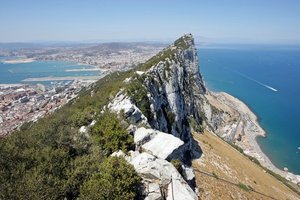

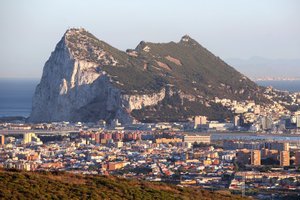
Rock of Gibraltar | Ferry Spain - Morocco Gibraltar | |
Naturally, the main sight is the awesome rock; a vast limestone ridge that rises to 426m, with sheer cliffs on its northern and eastern sides. For the ancient Greeks and Romans this was one of the two pillars of Hercules, split from the other, Jebel Musa in Morocco, in the course of Hercules' arduous twelve labours. The two great rocks marked the edge of the ancient world. Most of the upper Rock, starting just above the town, is a nature reserve with spectacular views and several interesting spots to visit. A great way to get up here is by the cable car (catch it from Red Sands Rd, it goes every few minutes 09:30-17:00). | Since 2000, FRS Iberia and FRS Maroc have been operating year round fast ferry sailings across the Strait of Gibraltar between Spain and Morocco. The Main FRS route between Tarifa (Spain) and the buzzing port of Tangier (Morocco) is the shortest seaway between the two continents and takes a mere 35 minutes. In addition, FRS also connects Tangier with the ports of Algeciras and Gibraltar. With its modern high-speed ferries. FRS has become the market leader for passenger and car crossings to and from Tangier. FRS ferry crossings can be supplemented with a variety of organised land excursions in and around Tangier. |
Jerez de la Frontera
Jerez de la Frontera, well known for its wines, its horses and its flamenco, preserves a historic centre that has been declared a historic artistic site. One of the noblest towns in Cádiz brings together the splendour of aristocratic palaces with the popular flavour of typically Andalusian houses. Features that are shown off every year at the celebration of the Horse Fair, declared of International Tourist Interest. This enormous offer of culture is enriched with the aromas of a regional cuisine in which the Denomination of Origin of Jerez-Xérès-Sherry Manzanilla-Sanlúcar de Barrameda is outstanding. A visit to one of the city's wine cellars will help travellers to get a deeper understanding of its winemaking tradition.

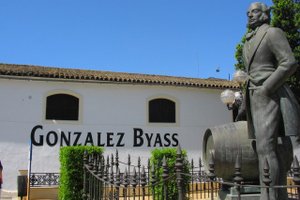
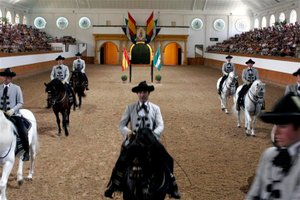
Mezquita del Alcazar | Bodega Gonzalez Byass ‘Tio Pepe’ | The Royal Andalucian School of Equestrian Art |
Jerez' muscular yet refined 11th- or 12th-century fortress is one of the best-preserved Almohad-era (1140–1212) relics left in Andalucía. It's noted for its octagonal tower, a classic example of Almohad defensive forts. You enter the Alcázar via the Patio de Armas . On the left is the beautiful mezquita (mosque), which was converted to a chapel by Alfonso X in 1264. Beyond the Patio de Armas, the lovely gardens re-create the ambience of Islamic times with their geometrical plant beds and tinkling fountains, while the domed Baños Árabes (Arab Baths) with their shafts of light are another highlight. Back on the Patio de Armas, the 18th-century Palacio Villavicencio , built over the ruins of the old Islamic palace, contains works of art, but is best known for its bird’s-eye view of Jerez from the summit; the palace’s tower also contains a camera obscura, which provides a picturesque live panorama of Jerez. Address : Alameda Vieja Admission fees and opening times depend on time of the year and other variables. | Home of the Tio Pepe brand and one of the biggest sherry houses, handily located just west of the Alcázar. Six or seven tours each are given daily in English and Spanish, and a few in German and French. Reservations can be made online. Address : Calle Manuel María González 12 Admission fees and opening times depend on time of the year and other variables. | The famed Royal Andalucian School of Equestrian Art trains horses and riders in equestrian skills, and you can watch them going through their paces in training sessions and visit the Horse Carriage Museum , which includes an 18th-century Binder Hunting Break. The highlight for most is the official exhibición (show) where the handsome white horses show off their tricks to classical music. You can book tickets online for this – advisable for the official shows, which can sell out. Address : Avenida Duque de Abrantes Admission fees and opening times depend on time of the year and other variables. |
Ronda
There are a lot of blissful southern villages in Andalusia, but which white village is as charming as Ronda? Through the deep gorge that mercilessly splits her in two, you can pose like in a fairy tale, with beautiful views in the background!
It is not surprising the 3rd most visited city in Andalusia, and may be high on your wish list. Even those who have already been there will gladly return. No one gets bored at Ronda! Ronda is hidden in the heart of the Serranía de Ronda, about 100 km from the city of Malaga. Approximately 35,000 people live there.
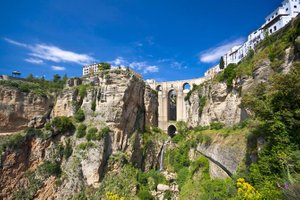
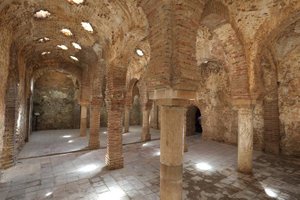
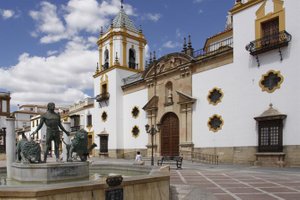
Puente Nuevo - New Bridge | Baños Arabes - Moorish baths | Plazas - Squares |
The deep Tajo gorge in the middle of the city immediately impresses visitors. From the Puente Nuevo, which runs with three arches over the Guadalevín river and connects the old Moorish center with the new El Mercadillo part, you have an excellent view of the overwhelming deep ravine. A ravine that has been declared a protected natural monument of Andalusia! The Puente Nuevo or 'New Bridge' was already built in the flourishing eighteenth century, and that took 42 years! There is also an 'Old Bridge', built in the 16th century to replace the previously collapsed Arab bridge (11th century). The 3rd bridge that crosses the ravine is the Puente Romano.
If you do not have a fear of heights, it feels great to stand in the middle of the enormous Puente Nuevo and gaze at the depth for about a hundred meters! | This is the best-kept Moorish bathhouse in Spain! It dates from the late 13th century, during the reign of King Abomelik. The large boiler that heated the water is still visible and in good condition. The star-shaped openings in the roof were designed according to the Alhambra model in Granada!
The bathhouse is located in the old Moorish quarter, the San Miguel district.
Address - Calle Molino de Alarcón, s / n. Admission fees and opening times depend on time of the year and other variables.. | You see, lovers of white villages can indulge in Ronda! The old core of Ronda is after all a white village or 'pueblo blanco'. This is for example the Plaza del Socorro, the square opposite the Almocabar gate on the Calle Nuevo street.
At the beautiful Plaza Duquesa de Parcent you can show off the 15th-century church Santa Maria la Mayor, on the spot where - of course - there once stood a mosque. It took more than 200 years to build the church, a mix of Gothic and Renaissance style. |
Mijas
Mijas (pronounced Migas) is located above Fuengirola on a rock plateau in the province of Malaga, from Carihuela you are in Mijas you can take the taxi or the bus. Mijas is known for the white houses. It is also called "El pueblo blanco" which are built against the mountains, with its narrow streets and the donkey taxis Mijas is an attraction on itself. From April 2015 it is also possible to explore the village with an electric Tuk-Tuk. Mijas has a sandy beach of no less than 12 kilometers long. You reach this mountain village via some winding roads in about forty minutes from Carihuela. You can take the M-112 bus from Carihuela to Mijas. The bus stops at the stop behind Voom Voom (direction Fuengirola), the route to it is already fun. Mijas is more than 400 meters above sea level. In the park Mijas Pueblo you can walk and enjoy the beautiful view over the coast and the wooded mountains. Mijas has five city centers: Mijas Pueblo, Las Lagunas in Mijas Costa, the coastal towns of La Cala, Riviera and Calahonda. Beyond that Mijas itself is an attraction, there is plenty to see in the village. There are beautiful churches and interesting buildings to admire and in Mijas is the only bullring of Spain to find which is square. A must is the botanical garden of Mijas called La Muralla.

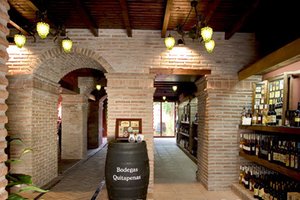
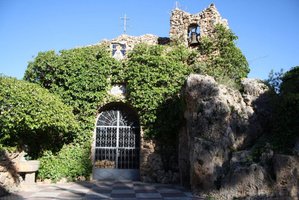
El Molino de Harina | El Museo del Vino | Ermita y mirador de la Virgen de la Peña |
In the past there were 22 flour mills in Mijas, of which only ruins remain. This grain mill was recently established and is a reconstruction of the operation of a real old flour mill driven by water pressure. The building is located on 'La Plaza del Compás de Mijas' and belongs to 'Museo Histórico-etnográfico de Mijas' (the historical-ethnographic museum of Mijas). It is embedded in a naturally formed rock. The museum shows the traditional tasks that work performed in Mijas and surroundings.
Location Avenida El Compás 29650 Mijas (Mijas Pueblo)
Admission fees and opening times depend on time of the year and other variables. | As soon as you walk into the rural wine museum of Mijas, you realize that it is a place full of love and affection that is dedicated to Malagasy wine. El Museo del Vino is located in a building from 1839 called La Casa de Trasformación de la Luz (The House of Light Transformation). The museum exists since 1997 and contains a very wide range of wines. You can enjoy a delicious wine tasting here.
Location Calle San Sebastián 14 29610 Mijas
Admission fees and opening times depend on time of the year and other variables. | In 1548 the Mercedarios brothers cut a pilgrimage site out of the rocks. The pilgrimage site houses the statue of 'La Virgen de la Peña', the patron saint of Mijas. The statue of the Holy Virgin would have been found in 1586 in an old castle. The inhabitants had hidden the image to prevent it from ending up in the hands of the Moors. In September the village festival takes place that is entirely dedicated to 'la Virgen de la Peña'. |
Welcome to holiday apartment Hillside Suite's Website.
Discover Andalusia, with one of the warmest climates and people in Europe !
Luxurious apartment for 6 visitors in an enclosed community with 4 swimming pool areas located between Fuengirola and Marbella.
Enjoy a blissful tranquility just 5 minutes from the beautiful beach and close to shops, various golf courses and a whole range of other sports activities.
LINKS
CONTACT
Princess Park
Calle Huelva de Calahonda
29649 Mijas, Málaga, Spanje
PAYMENT METHODS
BANK